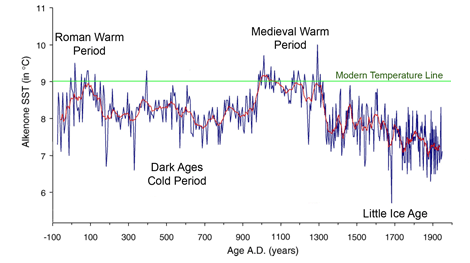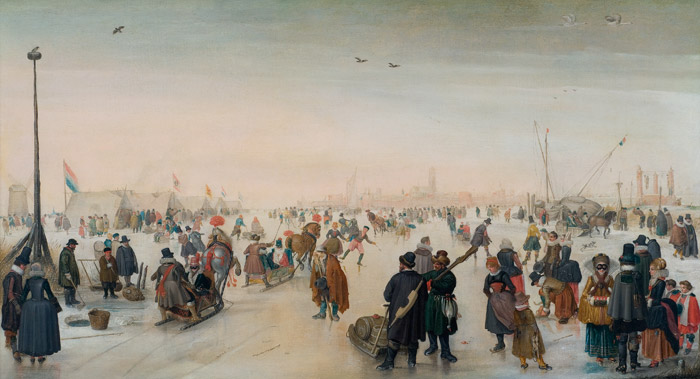
holocene (Sicre et al., 2008). Click for larger image.
The globe is currently in an interglacial state: a millennial-scale period of warm temperatures with limited glacier coverage. The opposite state within an Ice Age is a glacial period of cool temperatures and extensive glacier coverage. Although the interglacial stage has prevailed for the past 10000 years, some variation in glacial stages has transpired. Within the Northern Hemisphere, a “Little Ice Age” occurred during the 16th to 19th centuries (Figure 1). This age involved a series of glacial advances and cooler temperatures throughout the Northern Hemisphere, particularly in Europe. This relatively cool period followed the Medieval Warm Period, lasting a few centuries prior (Mann, 2003).
During the Little Ice Age, advances of glaciers devastated valley settlements, extending past historical records. The cooler climate and alterations in atmospheric circulation patterns distressed agricultural activities, leading to famine and increased death rates across Europe. Many populations experienced increased frequency and duration of snowstorms and cold weather as well as high variability and extremes in atmospheric processes. In particular, Norse settlements of Greenland, which were established in the 10th century, collapsed as a result. The cooler period increased sea ice extent, preventing imperative trade with Europe. This reduced access to trade, agricultural failure and extreme cold weather stressed the settlement to its limit. Overall, there was a high variability in glacial advance rates and climate alterations during the Little Ice Age. The Little Ice Age is predicted to be a result of solar output variations, atmospheric circulation disparities, volcanic aerosol release and other natural climatic forcing rather than human influences. Regional and temporal divergences in climatic effect make this age very difficult to interpret (Mann, 2003).

References
Glacier Links
Material on this page was provided by Maren Pauly and edited by Tristan Mills(Department of Geography, University of Waterloo).
